30 3.4 Classification of Igneous Rock — Physical Geology – 2nd Edition
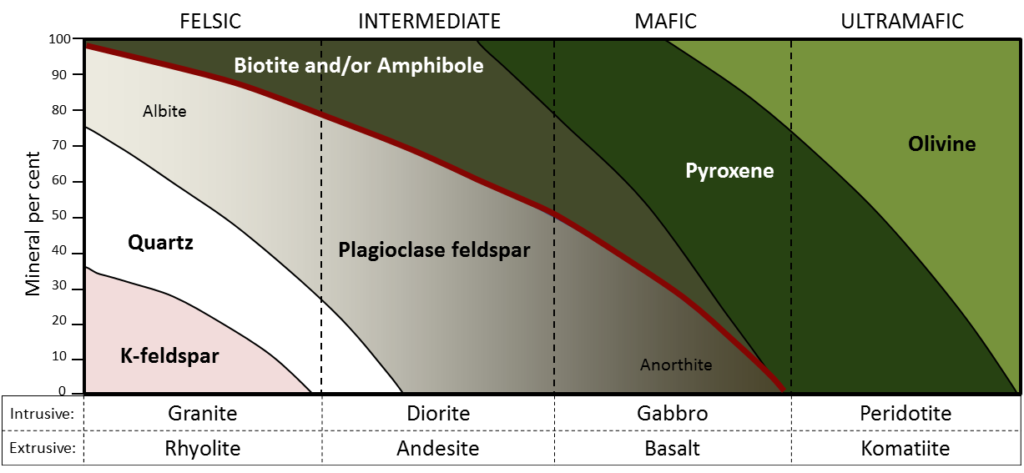
If we focus on the non-ferromagnesian silicates, it is evident that felsic rocks can have from 0% to 35% K-feldspar, from 25% to 35% quartz (the vertical thickness of the quartz field varies from 25% to 35%), and from 25% to 50% plagioclase (and that plagioclase will be sodium-rich, or albitic). Intermediate rocks can have up to 25% quartz and 50% to 75% plagioclase. Mafic rocks only have plagioclase (up to 50%), and that plagioclase will be calcium-rich, or anorthitic.
The dashed blue lines (labelled a, b, c, d) in Figure 3.4.2 represent four igneous rocks. Complete the table by estimating the mineral proportions (percent) of the four rocks (to the nearest 10%).
Hint: Rocks b and d are the easiest; start with those.
| Rock | Biotite/amphibole | Pyroxene | Olivine | Plagioclase | Quartz | K-feldspar |
|---|---|---|---|---|---|---|
| a | ||||||
| b | ||||||
| c | ||||||
| d |
See Appendix 3 for Exercise 3.5 answers.
Figure 3.4.3 provides a diagrammatic representation of the proportions of dark minerals in light-coloured rocks. You can use that when trying to estimate the ferromagnesian mineral content of actual rocks, and you can get some practice doing that by completing Exercise 3.6. Be warned! Geology students almost universally over-estimate the proportion of dark minerals.
The four igneous rocks shown below have differing proportions of ferromagnesian silicates. Estimate those proportions using the diagrams in Figure 3.4.3, and then use Figure 3.4.1 to determine the likely rock name for each one.
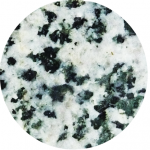 |
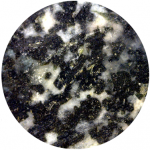 |
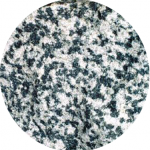 |
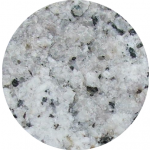 |
| ___% | ___% | ___% | ___% |
| __________ | __________ | __________ | __________ |
See Appendix 3 for Exercise 3.6 answers.
Igneous rocks are also classified according to their textures. The textures of volcanic rocks will be discussed in Chapter 4, so here we’ll only look at the different textures of intrusive igneous rocks. Almost all intrusive igneous rocks have crystals that are large enough to see with the naked eye, and we use the term phaneritic (from the Greek word phaneros meaning visible) to describe that. Typically that means they are larger than about 0.5 millitmeres (mm) — the thickness of a strong line made with a ballpoint pen. (If the crystals are too small to distinguish, which is typical of most volcanic rocks, we use the term aphanitic (from the Greek word aphanos – unseen) The intrusive rocks shown in Figure 3.3.5 are all phaneritic, as are those shown in Exercise 3.6.
In general, the size of crystals is proportional to the rate of cooling. The longer it takes for a body of magma to cool, the larger the crystals can grow. It is not uncommon to see an intrusive igneous rock with crystals up to 1 centimetre (cm) long. In some situations, especially toward the end of the cooling stage, the magma can become water rich. The presence of liquid water (still liquid at high temperatures because it is under pressure) promotes the relatively easy movement of ions, and this allows crystals to grow large, sometimes to several centimetres (Figure 3.4.4). Finally, as already described, if an igneous rock goes through a two-stage cooling process, its texture will be porphyritic (Figure 3.3.7).
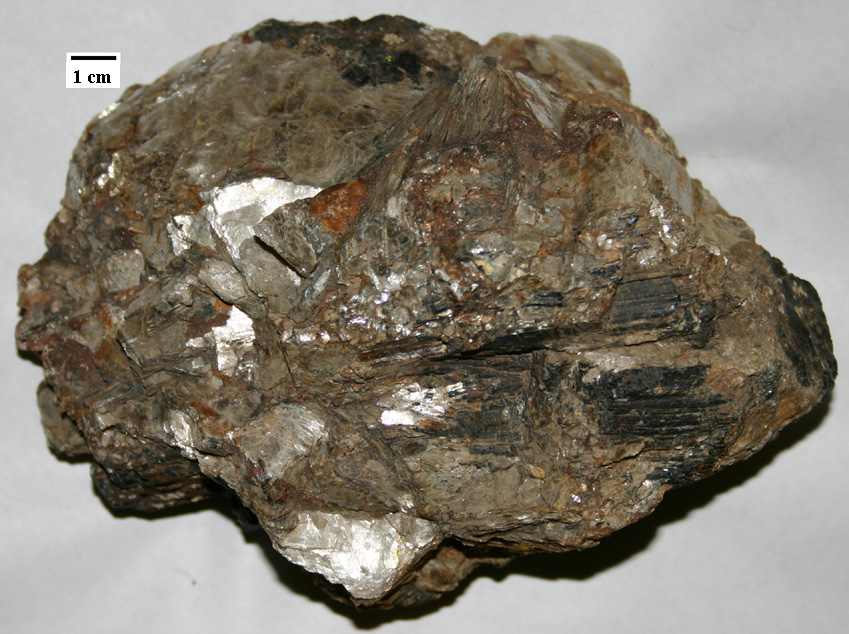
Image Descriptions
| Igneous Rocks | Felsic | Intermediate | Mafic | Ultramafic |
|---|---|---|---|---|
| K-feldspar | 0 to 35% | 0% | 0% | 0% |
| Quartz | 25 to 35% | 0 to 25% | 0% | 0% |
| Plagioclase feldspar | 25 to 50% | 50 to 70% | 0 to 50% | 0% |
| Biotite and/or Amphibole | 0 to 20% | 20 to 40% | 0 to 30% | 0% |
| Pyroxene | 0% | 0 to 20% | 20 to 75% | 0% to 75% |
| Olivine | 0% | 0% | 0 to 25 % | 25% to 100% |
| Intrusive | Granite | Diorite | Gabbro | Peridotite |
| Extrusive | Rhyolite | Andesite | Basalt | Komatiite |
Attributions
- Figure 3.4.1, 3.4.2, 3.4.3: © Steven Earle. CC BY.
- Figure 3.4.4: Pegmatite. Public domain.
<!– pb_fixme –>
<!– pb_fixme –>


